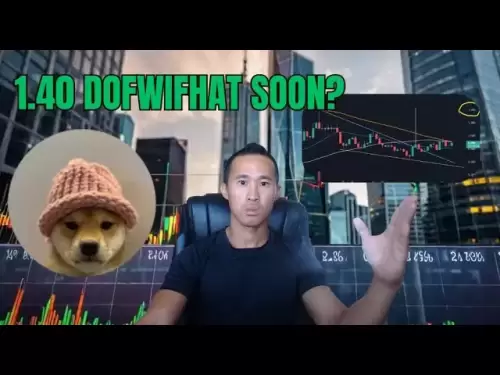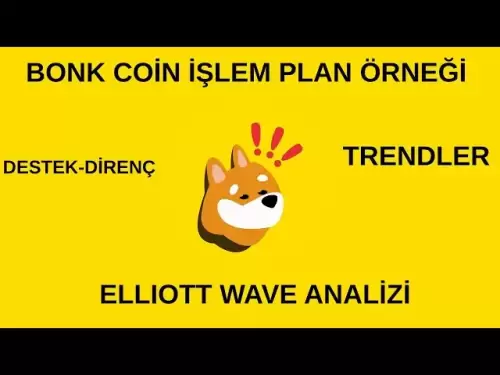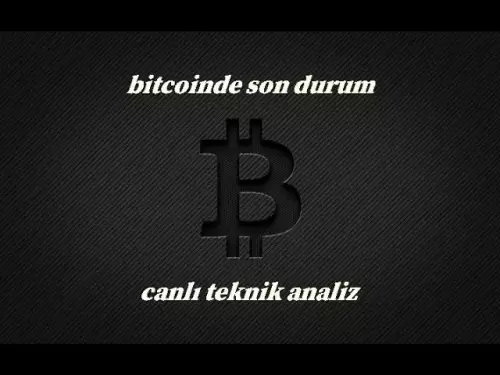-
 Bitcoin
Bitcoin $108,562.4295
0.46% -
 Ethereum
Ethereum $2,533.9553
1.52% -
 Tether USDt
Tether USDt $1.0002
-0.01% -
 XRP
XRP $2.2542
2.23% -
 BNB
BNB $662.4567
1.48% -
 Solana
Solana $151.4114
3.48% -
 USDC
USDC $0.9999
0.00% -
 TRON
TRON $0.2860
0.91% -
 Dogecoin
Dogecoin $0.1685
3.72% -
 Cardano
Cardano $0.5809
1.63% -
 Hyperliquid
Hyperliquid $39.2916
1.85% -
 Sui
Sui $2.8874
0.85% -
 Bitcoin Cash
Bitcoin Cash $496.5801
2.72% -
 Chainlink
Chainlink $13.3582
2.48% -
 UNUS SED LEO
UNUS SED LEO $9.0279
0.07% -
 Avalanche
Avalanche $18.0773
2.30% -
 Stellar
Stellar $0.2426
3.05% -
 Toncoin
Toncoin $2.9086
6.01% -
 Shiba Inu
Shiba Inu $0.0...01170
2.97% -
 Hedera
Hedera $0.1587
3.47% -
 Litecoin
Litecoin $87.4596
1.13% -
 Monero
Monero $317.0425
0.73% -
 Polkadot
Polkadot $3.3778
1.90% -
 Dai
Dai $0.9999
-0.01% -
 Ethena USDe
Ethena USDe $1.0001
-0.01% -
 Bitget Token
Bitget Token $4.4095
0.63% -
 Uniswap
Uniswap $7.3593
6.80% -
 Pepe
Pepe $0.0...09910
3.64% -
 Aave
Aave $274.7388
2.68% -
 Pi
Pi $0.4607
0.48%
What does UNI's 30-day price correlation breaking through a key level mean?
UNI's 30-day price correlation breaking through a key level signals a shift in its market relationship, impacting trading strategies and portfolio diversification.
Apr 25, 2025 at 09:56 pm
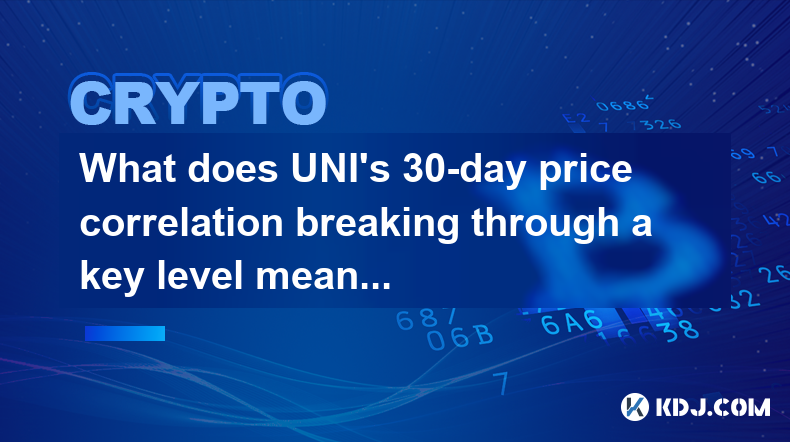
What does UNI's 30-day price correlation breaking through a key level mean?
In the cryptocurrency market, understanding the dynamics of price correlations can provide valuable insights into market trends and potential investment opportunities. Recently, the 30-day price correlation of Uniswap's native token, UNI, has broken through a key level, sparking interest and speculation among traders and investors. This article delves into what this breakthrough means, its implications, and how it can be analyzed and interpreted within the crypto ecosystem.
Understanding Price Correlation in Cryptocurrencies
Price correlation in the context of cryptocurrencies refers to the statistical relationship between the price movements of two or more assets. A high positive correlation indicates that the prices of the assets move in the same direction, while a high negative correlation suggests they move in opposite directions. A correlation close to zero implies no significant relationship between the price movements.
The Significance of UNI's 30-day Price Correlation Breakthrough
When UNI's 30-day price correlation breaks through a key level, it signifies a notable shift in the relationship between UNI and other cryptocurrencies or market indices. This breakthrough can be indicative of several factors, including changes in market sentiment, shifts in trading volumes, or the impact of new developments within the Uniswap ecosystem.
Analyzing the Breakthrough
To understand the implications of this breakthrough, it is essential to analyze the data and context surrounding the event. Here are some steps to consider:
- Identify the Key Level: Determine the specific correlation level that UNI has broken through. This could be a historical threshold or a level that is considered significant by market analysts.
- Compare with Other Assets: Examine the correlations of UNI with other major cryptocurrencies like Bitcoin (BTC) and Ethereum (ETH), as well as with market indices such as the Crypto Market Cap Index.
- Assess Market Sentiment: Look at social media sentiment, news articles, and trading volumes to gauge the overall market sentiment towards UNI and the broader DeFi sector.
- Evaluate Recent Developments: Consider any recent updates or changes within the Uniswap platform, such as new features, partnerships, or regulatory news that could influence UNI's price correlation.
Implications for Traders and Investors
The breakthrough in UNI's 30-day price correlation can have several implications for traders and investors. For instance, if the correlation with Bitcoin or Ethereum decreases, it might suggest that UNI is becoming more independent from the broader market trends, potentially offering a diversification opportunity. Conversely, an increase in correlation could indicate that UNI is more closely tied to the movements of these major assets, which could affect risk management strategies.
How to Use This Information in Trading Strategies
Traders can leverage the information about UNI's price correlation breakthrough to refine their trading strategies. Here are some practical steps:
- Monitor Correlation Trends: Use tools like correlation matrices and charts to keep track of UNI's correlation with other assets over time.
- Adjust Portfolio Allocation: Based on the correlation data, adjust the allocation of UNI in your portfolio to optimize risk and return.
- Set Trading Alerts: Set up alerts for when UNI's correlation with key assets reaches certain thresholds, allowing for timely adjustments to trading positions.
- Backtest Strategies: Use historical data to backtest trading strategies that incorporate UNI's correlation data, helping to validate their effectiveness.
Technical Analysis and Correlation Breakthroughs
Technical analysis can provide additional insights into the implications of UNI's correlation breakthrough. By examining price charts, moving averages, and other technical indicators, traders can identify potential entry and exit points based on the correlation data. For example, if UNI's correlation with Bitcoin decreases, it might signal a potential divergence in price movements, which could be exploited through strategic trading.
The Role of Market Liquidity
Market liquidity plays a crucial role in the dynamics of price correlations. A breakthrough in UNI's 30-day price correlation could be influenced by changes in liquidity, such as increased trading volumes on decentralized exchanges (DEXs) or shifts in liquidity pools. Analyzing liquidity metrics can provide a deeper understanding of the factors driving the correlation breakthrough.
Frequently Asked Questions
Q: How can I track UNI's price correlation in real-time?
A: To track UNI's price correlation in real-time, you can use various cryptocurrency analytics platforms such as CoinGecko, CoinMarketCap, or specialized tools like CryptoWatch. These platforms offer real-time data and correlation matrices that can help you monitor UNI's relationship with other assets.
Q: What other factors should I consider alongside UNI's price correlation?
A: In addition to price correlation, consider factors such as trading volume, market sentiment, on-chain metrics, and any recent developments or news related to Uniswap. These elements can provide a more comprehensive view of UNI's market position and potential price movements.
Q: Can a change in UNI's price correlation affect its volatility?
A: Yes, a change in UNI's price correlation can impact its volatility. If UNI becomes less correlated with major assets like Bitcoin, it might experience increased volatility as it becomes more independent from broader market trends. Conversely, a higher correlation could lead to more stable price movements in line with the market.
Q: How often should I review UNI's price correlation data?
A: It is advisable to review UNI's price correlation data regularly, ideally on a daily or weekly basis, depending on your trading strategy. Frequent monitoring can help you stay informed about any significant changes and adjust your investment decisions accordingly.
Disclaimer:info@kdj.com
The information provided is not trading advice. kdj.com does not assume any responsibility for any investments made based on the information provided in this article. Cryptocurrencies are highly volatile and it is highly recommended that you invest with caution after thorough research!
If you believe that the content used on this website infringes your copyright, please contact us immediately (info@kdj.com) and we will delete it promptly.
- Elon Musk, Andrew Yang, and Polymarket: What's the Buzz?
- 2025-07-07 10:30:12
- Lightchain AI's Bonus Round: The Final Chance Before Mainnet & Ecosystem Tools
- 2025-07-07 10:30:12
- TON Foundation, UAE Golden Visa, and Toncoin Staking: A New Chapter in Crypto Residency?
- 2025-07-07 10:50:12
- Altcoin Prices, Institutional Investors, and the Ethereum Rotation: What's the Deal?
- 2025-07-07 10:50:12
- TON Coin, Golden Visa, and UAE Denial: What's the Real Deal?
- 2025-07-07 10:55:12
- PEPE's Bullish Trend: Riding the 50% Gain Wave?
- 2025-07-07 10:55:12
Related knowledge
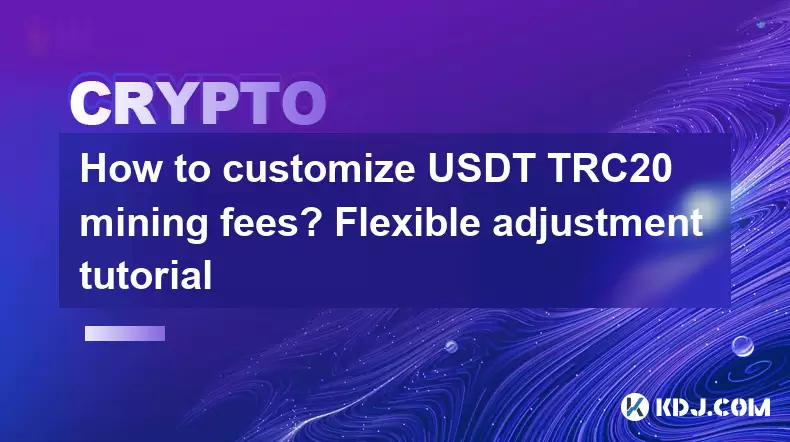
How to customize USDT TRC20 mining fees? Flexible adjustment tutorial
Jun 13,2025 at 01:42am
Understanding USDT TRC20 Mining FeesMining fees on the TRON (TRC20) network are essential for processing transactions. Unlike Bitcoin or Ethereum, where miners directly validate transactions, TRON uses a delegated proof-of-stake (DPoS) mechanism. However, users still need to pay bandwidth and energy fees, which are collectively referred to as 'mining fe...
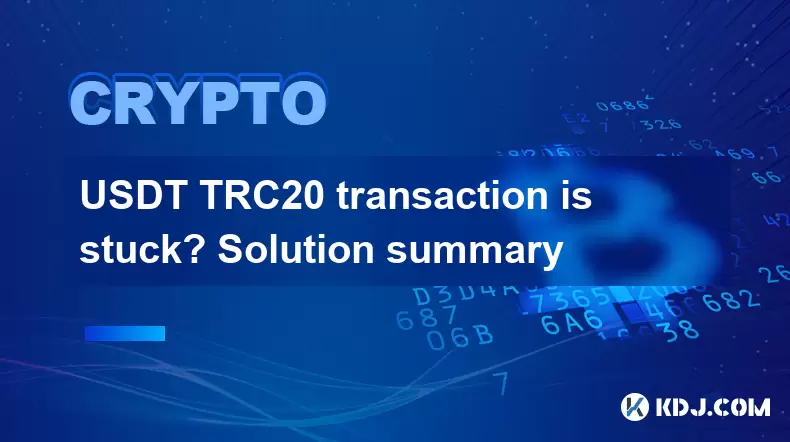
USDT TRC20 transaction is stuck? Solution summary
Jun 14,2025 at 11:15pm
Understanding USDT TRC20 TransactionsWhen users mention that a USDT TRC20 transaction is stuck, they typically refer to a situation where the transfer of Tether (USDT) on the TRON blockchain has not been confirmed for an extended period. This issue may arise due to various reasons such as network congestion, insufficient transaction fees, or wallet-rela...
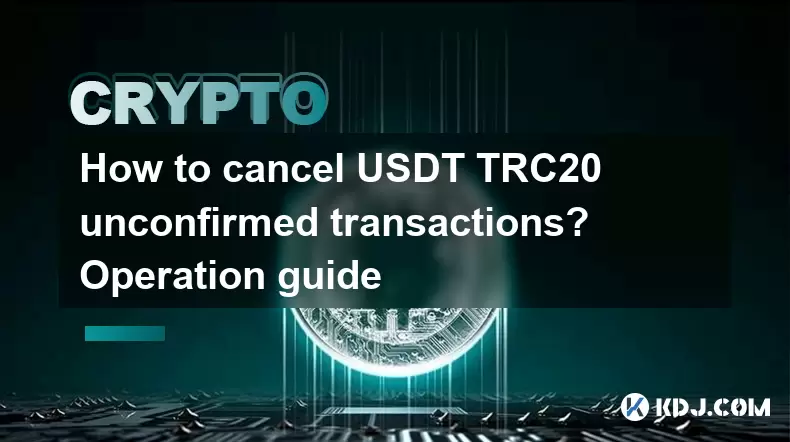
How to cancel USDT TRC20 unconfirmed transactions? Operation guide
Jun 13,2025 at 11:01pm
Understanding USDT TRC20 Unconfirmed TransactionsWhen dealing with USDT TRC20 transactions, it’s crucial to understand what an unconfirmed transaction means. An unconfirmed transaction is one that has been broadcasted to the blockchain network but hasn’t yet been included in a block. This typically occurs due to low transaction fees or network congestio...
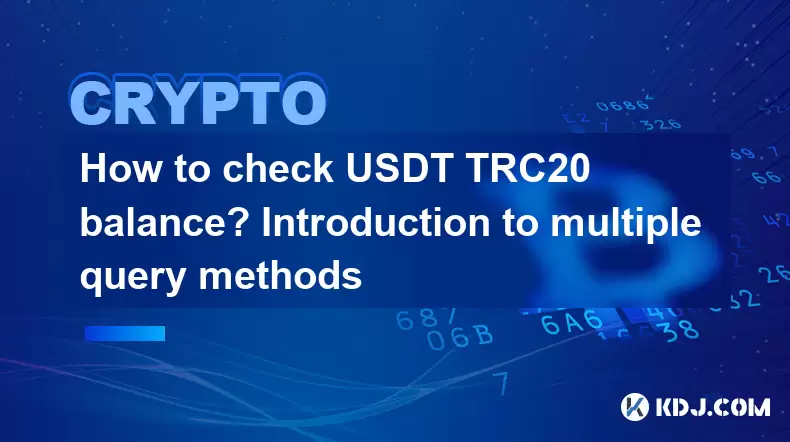
How to check USDT TRC20 balance? Introduction to multiple query methods
Jun 21,2025 at 02:42am
Understanding USDT TRC20 and Its ImportanceUSDT (Tether) is one of the most widely used stablecoins in the cryptocurrency market. It exists on multiple blockchain networks, including TRC20, which operates on the Tron (TRX) network. Checking your USDT TRC20 balance accurately is crucial for users who hold or transact with this asset. Whether you're sendi...
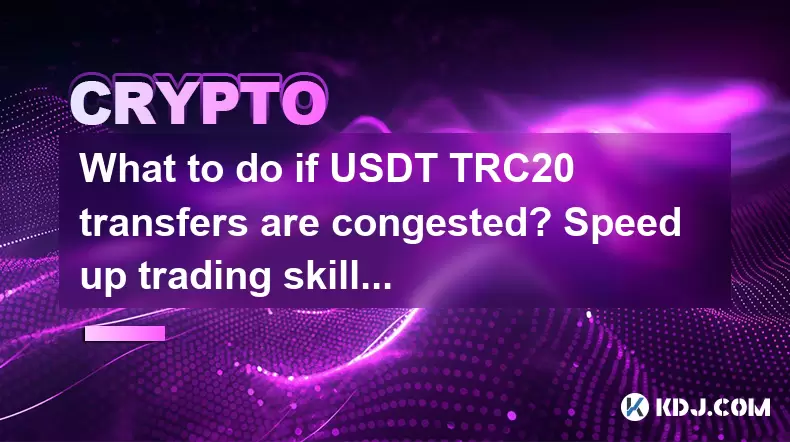
What to do if USDT TRC20 transfers are congested? Speed up trading skills
Jun 13,2025 at 09:56am
Understanding USDT TRC20 Transfer CongestionWhen transferring USDT TRC20, users may occasionally experience delays or congestion. This typically occurs due to network overload on the TRON blockchain, which hosts the TRC20 version of Tether. Unlike the ERC20 variant (which runs on Ethereum), TRC20 transactions are generally faster and cheaper, but during...
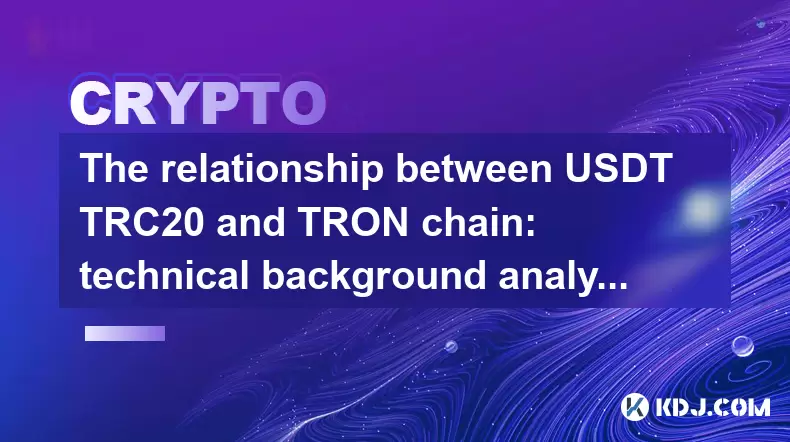
The relationship between USDT TRC20 and TRON chain: technical background analysis
Jun 12,2025 at 01:28pm
What is USDT TRC20?USDT TRC20 refers to the Tether (USDT) token issued on the TRON blockchain using the TRC-20 standard. Unlike the more commonly known ERC-20 version of USDT (which runs on Ethereum), the TRC-20 variant leverages the TRON network's infrastructure for faster and cheaper transactions. The emergence of this version came as part of Tether’s...

How to customize USDT TRC20 mining fees? Flexible adjustment tutorial
Jun 13,2025 at 01:42am
Understanding USDT TRC20 Mining FeesMining fees on the TRON (TRC20) network are essential for processing transactions. Unlike Bitcoin or Ethereum, where miners directly validate transactions, TRON uses a delegated proof-of-stake (DPoS) mechanism. However, users still need to pay bandwidth and energy fees, which are collectively referred to as 'mining fe...

USDT TRC20 transaction is stuck? Solution summary
Jun 14,2025 at 11:15pm
Understanding USDT TRC20 TransactionsWhen users mention that a USDT TRC20 transaction is stuck, they typically refer to a situation where the transfer of Tether (USDT) on the TRON blockchain has not been confirmed for an extended period. This issue may arise due to various reasons such as network congestion, insufficient transaction fees, or wallet-rela...

How to cancel USDT TRC20 unconfirmed transactions? Operation guide
Jun 13,2025 at 11:01pm
Understanding USDT TRC20 Unconfirmed TransactionsWhen dealing with USDT TRC20 transactions, it’s crucial to understand what an unconfirmed transaction means. An unconfirmed transaction is one that has been broadcasted to the blockchain network but hasn’t yet been included in a block. This typically occurs due to low transaction fees or network congestio...

How to check USDT TRC20 balance? Introduction to multiple query methods
Jun 21,2025 at 02:42am
Understanding USDT TRC20 and Its ImportanceUSDT (Tether) is one of the most widely used stablecoins in the cryptocurrency market. It exists on multiple blockchain networks, including TRC20, which operates on the Tron (TRX) network. Checking your USDT TRC20 balance accurately is crucial for users who hold or transact with this asset. Whether you're sendi...

What to do if USDT TRC20 transfers are congested? Speed up trading skills
Jun 13,2025 at 09:56am
Understanding USDT TRC20 Transfer CongestionWhen transferring USDT TRC20, users may occasionally experience delays or congestion. This typically occurs due to network overload on the TRON blockchain, which hosts the TRC20 version of Tether. Unlike the ERC20 variant (which runs on Ethereum), TRC20 transactions are generally faster and cheaper, but during...

The relationship between USDT TRC20 and TRON chain: technical background analysis
Jun 12,2025 at 01:28pm
What is USDT TRC20?USDT TRC20 refers to the Tether (USDT) token issued on the TRON blockchain using the TRC-20 standard. Unlike the more commonly known ERC-20 version of USDT (which runs on Ethereum), the TRC-20 variant leverages the TRON network's infrastructure for faster and cheaper transactions. The emergence of this version came as part of Tether’s...
See all articles





















